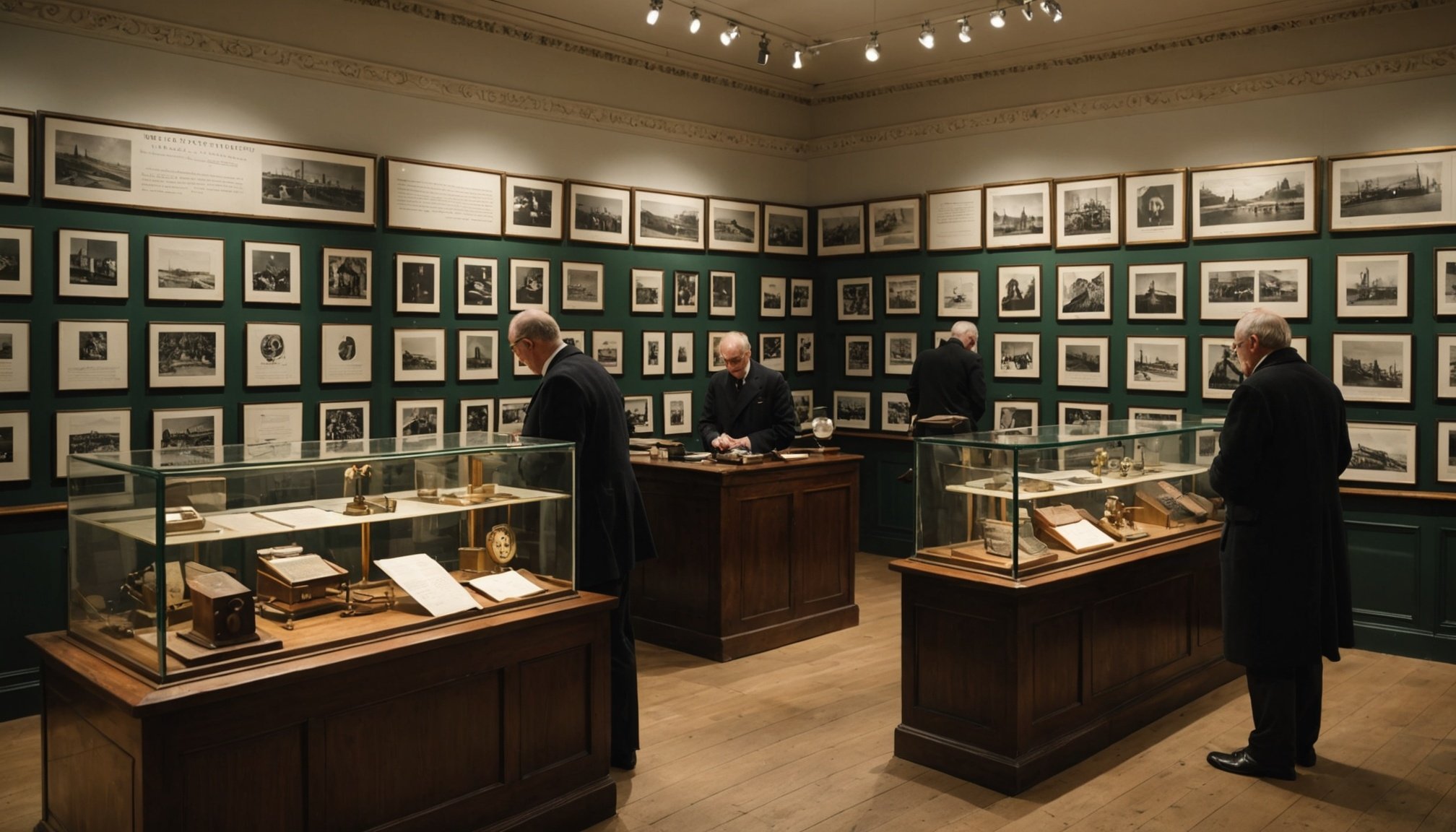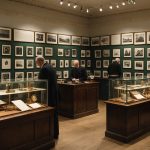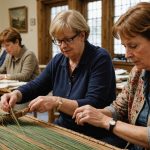Overview of British Espionage History Exhibits
The story of British espionage is as captivating as it is complex. Spanning centuries, espionage history in Britain reveals tales of intrigue, secrecy, and intelligence innovation. British espionage roots trace back to Elizabethan times when Queen Elizabeth I’s network of spies protected the nation against threats like the Spanish Armada. This early system laid the groundwork for the sophisticated intelligence agencies the UK boasts today.
Notable historical figures like Francis Walsingham, recognized as the father of modern espionage, played pivotal roles. His intelligence operations were instrumental in preserving the crown. Fast forward to World War II, and figures like the codebreakers at Bletchley Park, including Alan Turing, made significant contributions to allied successes by deciphering enemy communications.
Also to discover : Discover the Top UK Destinations for Expert Workshops in Traditional British Tapestry Weaving
The cultural significance of espionage is deeply woven into UK heritage, with spies and intelligence operations influencing literature, film, and public consciousness. From James Bond to real-life spies, the allure of espionage continues to capture the imagination. Today, UK museums dedicated to this “cloak and dagger” world provide fascinating insights, offering exhibits that explore these historical narratives. The intrigue and mystery of espionage ensure its place as a subject of enduring fascination.
Top UK Museums Showcasing Espionage Exhibits
Exploring the world of espionage can be an enthralling experience, especially when visiting the top UK museums known for their espionage exhibits. These institutions not only enrich cultural tourism but also provide insight into the fascinating history of intelligence operations.
This might interest you : Discover the art of traditional british textile dyeing: a tourist”s guide to immersive, hands-on workshops
Museum of Military Intelligence
The Museum of Military Intelligence offers a detailed glimpse into the covert world of intelligence. Its collection boasts artifacts and documents that highlight pivotal moments and figures in espionage history. Special exhibitions focus on the evolution of intelligence methods, capturing the imagination of all who visit.
The Imperial War Museum
At the Imperial War Museum, espionage takes center stage in a variety of exhibits. The museum delves into covert operations carried out during major conflicts, showcasing a diverse range of artifacts and personal narratives. Regular events help engage a wide visitor demographic, from students to history enthusiasts.
The Science Museum
The Science Museum also features compelling espionage-related collections, exploring the technological advancements which have shaped modern intelligence. Interactive displays and cutting-edge exhibits make this museum an essential stop for tech-savvy tourists interested in the intersection of science and secrets.
These museums not only cater to cultural tourism but also play a vital role in educating visitors about the intricate web of espionage throughout history.
Detailed Descriptions of Exhibits
When exploring the museum exhibits, visitors are immediately drawn to the captivating stories woven through the displays. Each section boasts meticulously curated in-depth displays that capture the essence of espionage throughout history.
Central to the exhibits are the espionage artifacts – tangible links to the covert world they represent. Among the standout pieces is the Enigma machine, a quintessential tool in cryptology during World War II. Such artifacts are not only preserved but are also presented in ways that bring their historical context to life.
Visitors have the chance to interact with several exhibits, offering a glimpse into the lives of spies. Imagine the thrill of decoding a message using a simulated version of the Enigma or stepping into a recreated spy safehouse. These interactive elements enhance understanding and engagement, making the learning experience both educational and memorable.
Furthermore, each exhibit is designed to narrate the human stories behind the artifacts. Whether it’s a cipher used by a WWII spy or a camera hidden in a button, every piece has a tale that deepens visitors’ appreciation of the intricate world of espionage.
Visitor Information and Accessibility
Understanding museum accessibility and visitor information is vital for planning your visit. Start by reviewing essential details and travel tips provided here.
Opening Hours and Ticket Prices
The museum operates with convenient hours, typically opening its doors by 10 AM and welcoming visitors until around 5 PM. It’s wise to book tickets in advance to avoid any last-minute surprises. Prices vary; adults might pay £15, while concessions and children enjoy discounts, making it affordable for families.
Directions and Transportation Options
Arriving is simple with various transportation options. Public transport, such as buses and trains, offer frequent services to the museum’s vicinity. Alternatively, parking facilities are available for those driving, but check availability during peak times to ensure a smooth journey.
Accessibility Features for Visitors
Comprehensive accessibility features are in place. Wheelchair ramps, elevators, and priority seating are provided to accommodate all visitors.
- Consider guided tours for a deeper dive into exhibits.
- Plan your visit during non-peak hours for a relaxed experience.
- Tourist information is readily available, including maps and audio guides.
These preparations ensure you maximise your visit, gaining insights and enjoying the museum fully.
Significance of Espionage Exhibits
Espionage exhibits hold significant educational value, offering unique insights into the shadowy world of intelligence. These exhibits serve as comprehensive educational resources for visitors, transforming complex historical events into understandable narratives. By presenting espionage history in an engaging manner, they illuminate the clandestine operations that have shaped contemporary society.
Visitors gain a deeper understanding of how espionage tactics and strategies influenced pivotal historical moments. This knowledge not only enriches their grasp of the past but also enhances their comprehension of current security challenges in global politics. Exhibits often include work from expert insights, showcasing detailed analysis from historians and professionals in the intelligence community. These insights provide context and depth, promoting informed discussions among attendees.
Experts frequently highlight the continuity of themes and methods in espionage, drawing parallels between past and present scenarios. They emphasize that understanding historical espionage can inform modern perspectives on privacy, surveillance, and international relations. The significance of these insights lies in their ability to bridge the gap between history and contemporary issues, fostering a well-rounded perspective that educates and informs. Through these comprehensive displays, espionage exhibits remain vital educational tools, enlightening the public about the interwoven nature of history and modern society.









